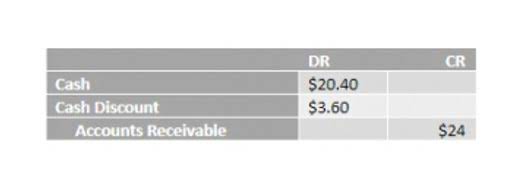Content

Fixed costs remained unchanged; however, as more units are produced and sold, more of the per-unit sales price is available to contribute to the company’s net income. We previously learned the characteristics of fixed and variable costs and introduced the basics of cost behavior. The company will use this “margin” Brigade Outsourced Accounting for Small Businesses & Non-profits to cover fixed expenses and hopefully to provide a profit. In the Dobson Books Company example, the total variable costs of selling $200,000 worth of books were $80,000. Remember, the per-unit variable cost of producing a single unit of your product in a particular production schedule remains constant.
Once you know that you have a net loss on your hands, you can use contribution margin ratio to figure out what you need to do to break even. But you could also increase sales by $200,000 without increasing variable expenses. Yes, the Contribution Margin Ratio is a useful measure of profitability as it indicates how much each sale contributes to covering fixed costs and producing profits. In 2022, the product generated a total of $1 billion in revenue, with 20 million units sold, alongside a total of $400 million in variable costs incurred. The resulting ratio compares the contribution margin per unit to the selling price of each unit to understand the specific costs of a particular product. The contribution margin represents the revenue that a company gains by selling each additional unit of a product or good.
Contribution margin as a measure of efficiency in the operating room
These cost components should not be considered while taking decisions about cost analysis or profitability measures. The contribution margin ratio represents the marginal benefit of producing one more unit. In the wake of the COVID-19 pandemic and escalating tensions with China, American companies are actively seeking alternatives to mitigate their supply chain risks and reduce dependence on Chinese manufacturing.
What is the formula for contribution margin ratio quizlet?
The contribution margin ratio is computed by: dividing contribution margin per unit by the sales price per unit. The formula used to find the number of units that need to be sold in order to breakeven or generate a target profit is: (fixed expenses + operating income) ÷ contribution margin per unit.
Doing this break-even analysis helps FP&A (financial planning & analysis) teams determine the appropriate sale price for a product, the profitability of a product, and the budget allocation for each project. In this article, the experts at Sling will help you understand contribution margin ratio better, show you how to calculate it, and reveal the best way to reduce this ratio to generate more profit. Suppose you’re tasked with calculating the contribution margin ratio of a company’s product. It can be important to perform a breakeven analysis to determine how many units need to be sold, and at what price, in order for a company to break even.
What other financial metrics are related to the Contribution Margin Ratio?
Suppose Company A has the following income statement with revenue of 100,000, variable costs of 35,000, and fixed costs of 20,000. The contribution margin ratio represents a company’s revenue minus variable costs, divided by its revenue. In short, it is the proportion of revenue left over after paying for variable costs. That can help transform your labor costs from a variable expense to a fixed expense and allow you to keep those expenses under tighter control.

To use contribution margin and ratio for channel analysis, you need to calculate the contribution margin and ratio for each channel, and compare them with the average contribution margin and ratio of the business. Contribution margin analysis also helps companies measure their operating leverage. Companies that sell products or services that generate higher profit with lower fixed and variable costs have very good operating leverage. The contribution margin ratio is the percentage of sales revenues, service revenues, or selling price remaining after subtracting all of the variable costs and variable expenses.
Calculating the Contribution Margin and Ratio
You might wonder why a company would trade variable costs for fixed costs. One reason might be to meet company goals, such as gaining market share. Other reasons include being a leader in the use of innovation and improving efficiencies.
Is contribution margin ratio another name for the gross margin ratio?
Gross margin is the amount of profit left after subtracting the cost of goods sold from revenue, while contribution margin is the amount of profit left after subtracting variable costs from revenue.
The contribution margin is also useful for determining the impact on profits of changes in sales. In particular, it can be used to estimate the decline in profits if sales drop, and so is a standard tool in the formulation of budgets. Look at the contribution margin on a per-product or product-line basis, and review https://adprun.net/accounting-payroll-services/ the profitability of each product line. Selling products at the current price may no longer make sense, and if the contribution margin is very low, it may be worth discontinuing the product line altogether. This strategy can streamline operations and have a positive impact on a firm’s overall contribution margin.
